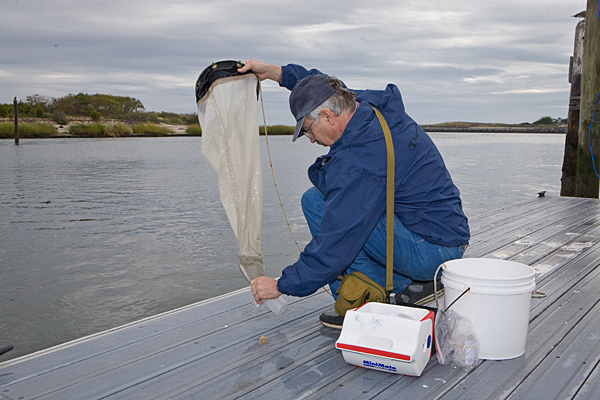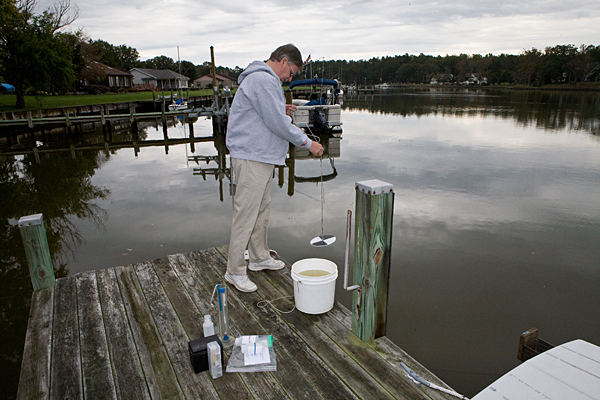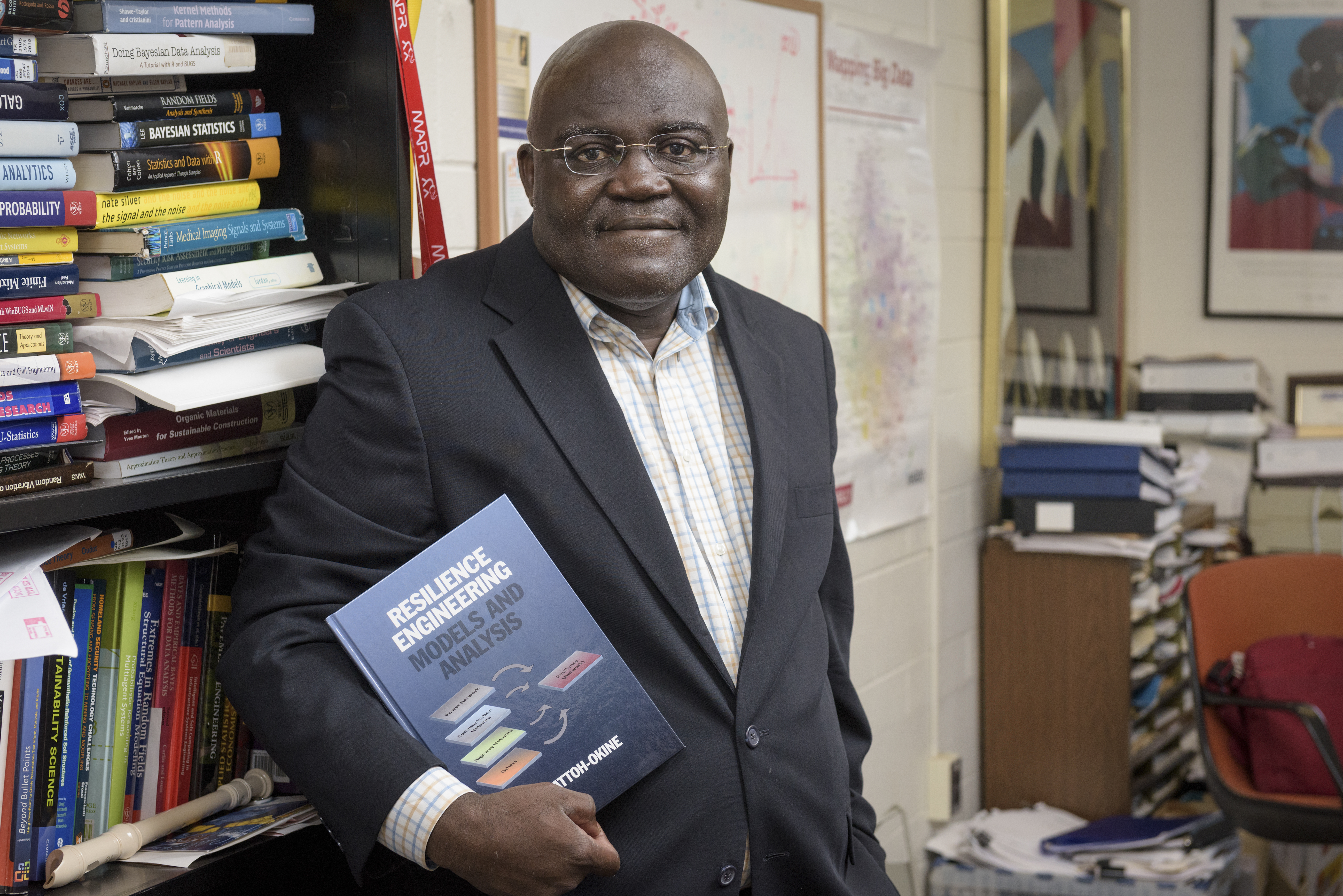Water watchdogs
Delaware Sea Grant water monitoring program celebrates 20 years
9:01 a.m., April 8, 2011--They converge off Florida’s Gulf Coast, filling the water with ghostly rouge-colored clouds, causing human respiratory irritation, and forcing the state to close shellfish beds. When the tiny, toxic plants associated with red tide showed up in Delaware’s Indian River Inlet in 2007 — the first time they’d appeared north of Cape Hatteras, N.C. — John Schneider knew the possible consequences.
“It’s nothing to mess with, that’s for sure,” said Schneider, who oversees the state of Delaware’s water resources management section and has faced red tide before in both Florida and North Carolina.
People Stories
'Resilience Engineering'
Reviresco June run
Thankfully, a ready team of staff and trained volunteers from the University of Delaware Citizen Monitoring Program took more than 100 water samples and supplied daily reports for two weeks after they initially identified the problem. That steady stream of information allowed the Delaware Department of Natural Resources and Environmental Control (DNREC) to provide the public with appropriate health advisories and to keep a close eye on the situation at little cost.
Though testing detected no toxin from the red tide phytoplankton, the event underscored the value of a stalwart group of staff and volunteers dedicated to watching our waters. For 20 years now, water quality monitoring volunteers trained through the UD- and Delaware Sea Grant-led program have fanned out across southern Delaware’s coastal region to visit assigned monitoring sites and collect data such as clarity and dissolved oxygen, harmful algae, and bacteria levels. In other words, they’re helping track what’s in the water to ensure safe swimming water, clean shellfish to eat, and a healthy ecosystem.
Since the program’s inception, nearly 300 volunteers have contributed 25,000 service hours, an estimated $550,000 of donated time.
Delaware Sea Grant’s Joe Farrell, who helped start the program, and Ed Whereat, who currently runs it, said the primary users of the data are university scientists and DNREC managers. The information is a key component of the state’s water quality monitoring program, and DNREC, which partially funds the program, uses it in its biennial report to the Environmental Protection Agency.
The program provides services to DNREC that would be logistically difficult and much more expensive for state personnel to perform so routinely and over such a wide area, Schneider said.
“DNREC wouldn't be able to adequately do its monitoring work if it wasn't for this program,” he concluded.
All those boots on the ground also have a community benefit, as each volunteer gains a greater understanding of coastal issues. South Bethany’s Dave Wilson started volunteering three years ago as a way to get involved and meet people after relocating from Connecticut. The retired engineer said it’s given him an appreciation of the things that affect water quality.
It’s nice to make a difference, too. Monitoring in South Bethany recently helped trigger efforts to filter 65 acres that border Delaware Route 1 and drain directly into one of the area’s canals. The contaminated runoff contributes to low oxygen levels that can kill fish and other wildlife.
“Water quality is a big concern of citizens here,” Wilson said. “They have these canals in their backyards, and the last thing they want is water that won’t support life.”
As Wilson suggests, being involved with the program also is about preserving quality of life. The volunteers live on the coast because they want to drink their morning coffee while watching an egret patrol the marsh or teach their visiting grandkids how to cast a fishing line just like their dad did. Degrade water quality, and so goes a piece of their happiness.
“My whole idea of being down here was to put my feet on the sand,” said Buzz Henefin, a retired naval submarine commander and longtime volunteer. “I’d like to leave this place cleaner for my grandchildren and right on into the future.”
Delaware Sea Grant is funded by the National Sea Grant College Program in the National Oceanic and Atmospheric Administration (NOAA) of the U.S. Department of Commerce, the state of Delaware, and the University of Delaware.
Article by Elizabeth Boyle
Photos by Derek Parks












